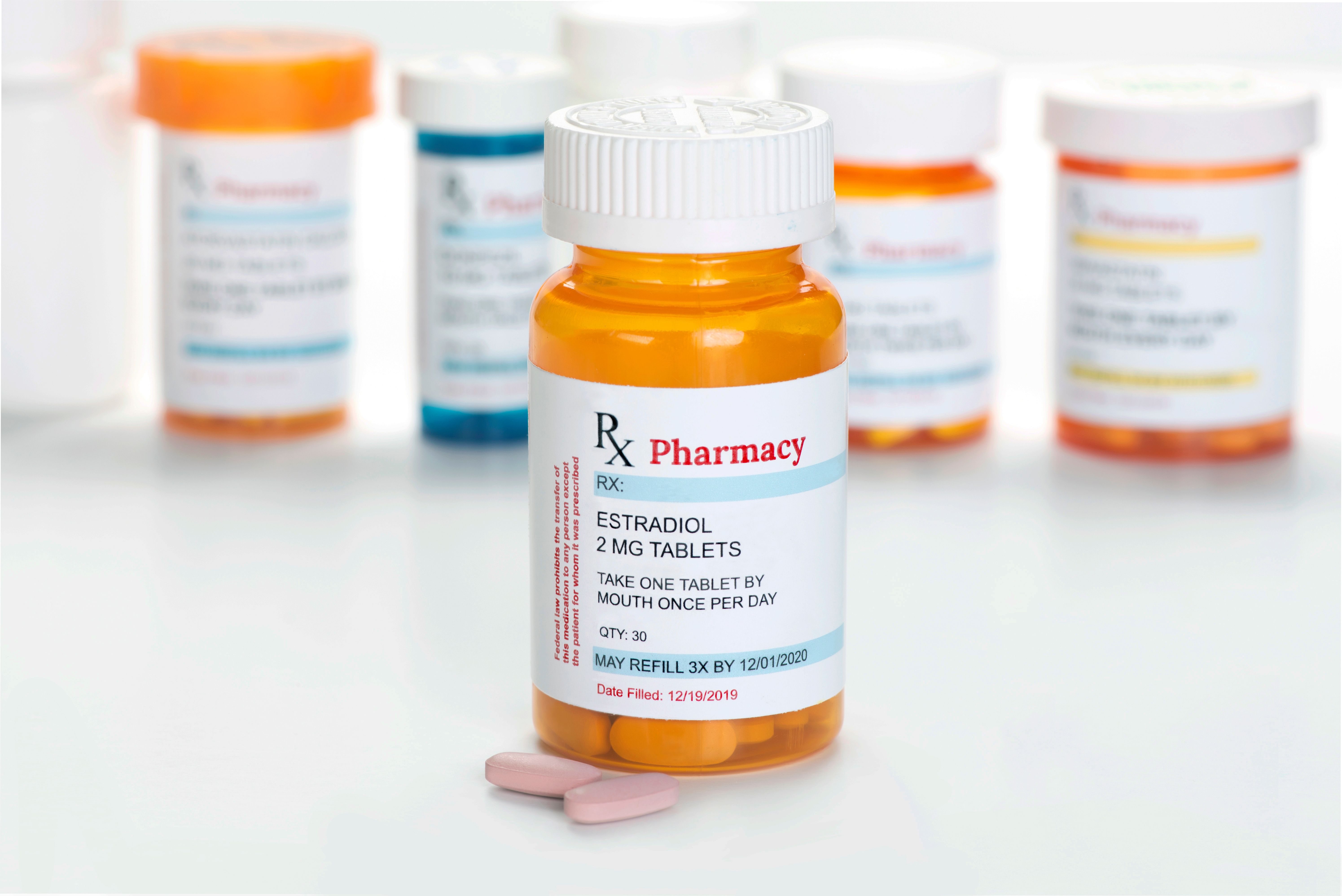LC–ESI-MS/MS Quantifies Estradiol with Reduced Reaction Time
The serum/plasma estradiol is useful for diagnosis, pathology, and therapeutic efficacy monitoring of estrogen-dependent diseases, according to the authors.
A new study out of Japan proposes a liquid chromatography–electrospray ionization–tandem mass spectrometry (LC–ESI-MS/MS) platform for faster quantification of the serum, or plasma, estradiol (E2) (1). The five authors, whose affiliations include Tokyo University of Science and Chiba University Hospital in Chiba, Japan, and Shimane University Hospital in Shimane, Japan, said they intended this method as a more “sensitive and specific” alternative to chemiluminescence enzyme immunoassay (CLEIA) which is traditionally clinically used.
Estradiol generic estrogen Prescription Medicine Container with other prescription medication bottles in background | Image Credit: © Sherry Young - stock.adobe.com

Their research, which was published in the journal Analytical and Bioanalytical Chemistry, characterized E2 as having usefulness in relation to estrogen-dependent diseases, chief among these breast cancer and gonadal dysfunction (1). Quantification of E2, the authors said, can facilitate diagnosis, pathological analysis, and monitoring of therapeutic efficacy of these ailments.
In a 2020 “LCGC Blog,” repurposed in that year’s December issue of The Column, LCGC International columnist Tony Taylor examined LC–MS with the integration of ESI, providing a collaborative and curated “beginner’s guide to LC–ESI-MS and as a primer for those who are already using the technique,” suggesting that the detailed approach of these authors is not uncommon in today’s analytical landscape—even though this particular study adds the augmentation of tandem MS (2).
Here, LC–ESI-MS/MS cut down reaction time (in this case, direct rather than two-step) from 90 to just 15 min (1). The direct reaction involved 1-(2,4-dinitro-5-fluorophenyl)-4,4-dimethylpiperazinium iodide (MPDNP–F) and E2 at 60 ºC, with 4-dimethylaminopyridine (DMAP) used as the organic catalyst. DMAP was shown to have a less negative effect on the LC–ESI-MS/MS platform than a previously used, non-volatile inorganic salt (NaHCO3, sodium bicarbonate).
In real sample analysis, the MPDNP–F derivatization was found to significantly enhance assay sensitivity and specificity (1). Followed by LC–ESI-MS/MS analysis, the method taken as a whole was able to quantify E2 with the authors’ desired accuracy and precision even at a lower limit of quantification (LLOQ) concentration of 5.0 pg/mL and a small sample volume (100 μL of serum/plasma). The method also tolerated the matrix effect well, according to the research team.
As far as developing a rapid, one-step procedure without a non-volatile inorganic salt, the researchers claimed success, saying their approach was viable for side-stepping prior drawbacks, including but not limited to poor specificity due to cross-reactivity, non-specific interactions, and poor agreement of results among different assay kits, in the attempted quantification of estradiol. They suggested that, in contrast to the commercial CLEIA, the customized LC–ESI-MS/MS analysis that they tested in this study should be considered more widely for clinical use, especially in view of the list of very serious diseases under examination.
References
(1) Kaneko, H.; Matsuoka, H.; Ishige, T.; Kobayashi, H.; Higashi, T. Derivatization Procedure of Estradiol with a Combination of MPDNP-F and 4-Dimethylaminopyridine to Generate Product Ion Containing Estradiol-Skeleton for Reliable Determination of its Serum/Plasma Concentrations by LC/ESI-MS/MS. Anal. Bioanal. Chem. 2024, 416, 597–608. DOI: 10.1007/s00216-023-05069-9
(2) Taylor, T. The LCGC Blog: 10 Great Tips for Electrospray Ionization LC–MS. Column 2020, 16 (12), 26–34. https://www.chromatographyonline.com/view/the-lcgc-blog-10-great-tips-for-electrospray-ionization-lc-ms (accessed 2024-04-19).
Vitamin D Determination Tested Using Liquid Chromatography–Tandem Mass Spectrometry
May 2nd 2024Scientists from Hangzhou Medical College recently recorded the effectiveness of novel quality control strategies for the determination of vitamin D using liquid chromatography–tandem mass spectrometry (LC–MS/MS).